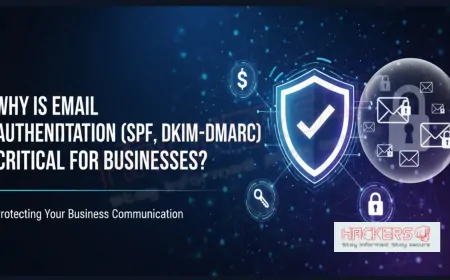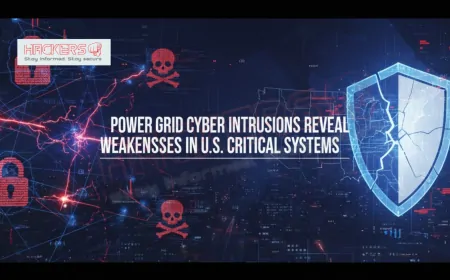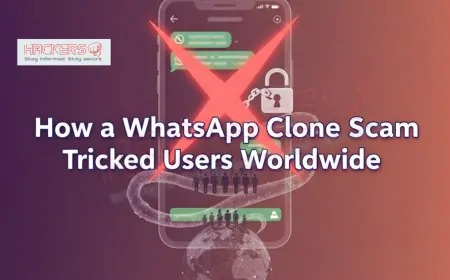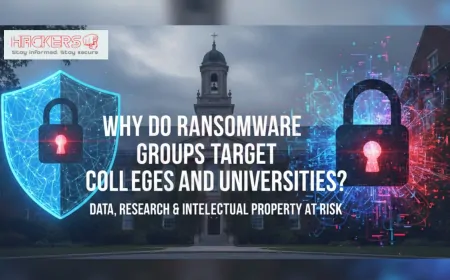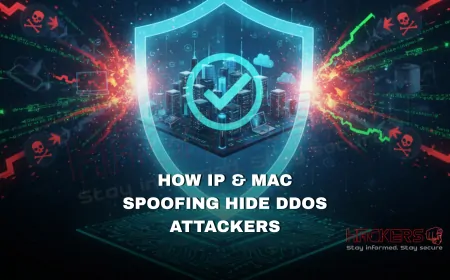How Can Small Startups Protect Their Business From Hackers?
Picture this: you're a founder pouring your heart into a new app, late nights coding and early mornings pitching to investors. Then, one day, everything grinds to a halt. Your customer data is stolen, your website is down, and your reputation is in tatters. This isn't a nightmare: it's the reality for many small startups hit by hackers. In 2025, with cyber attacks surging, small businesses face unprecedented risks. Statistics show that 46 percent of all cyber breaches target companies with fewer than 1,000 employees. Even more alarming, 61 percent of small and medium-sized businesses reported at least one attack in the past year. But here's the good news: you don't need a fortune or a team of experts to fight back. This blog post will guide you through practical steps to safeguard your startup, using simple language and real-world advice. Whether you're bootstrapping from a garage or scaling with your first hires, these tips can help you build a secure foundation without breaking the bank.

Table of Contents
- The Rising Threat Landscape for Startups
- Common Cyber Threats Facing Small Startups
- Building a Strong Security Foundation
- Employee Training and Awareness
- Affordable Cybersecurity Tools
- Securing Your Digital Assets
- Developing an Incident Response Plan
- Legal and Compliance Considerations
- Case Studies: Lessons from Hacked Startups
- Future-Proofing Your Business
- Conclusion
- Frequently Asked Questions
The Rising Threat Landscape for Startups
In today's digital age, startups are prime targets for hackers. Why? They often handle valuable data like customer emails or payment info, but lack the robust defenses of big corporations. Recent reports reveal that small businesses receive the highest rate of targeted malicious emails, about one in every 323 messages. The average cost of a data breach in 2025 hovers around 4.45 million dollars globally, a figure that could bankrupt a fledgling company.
Many founders underestimate these risks. A study found that 59 percent of small businesses spend less than 10 hours a week on cybersecurity, and 74 percent allocate under 10 percent of their IT budget to it. This overconfidence is dangerous, especially as threats evolve with AI and sophisticated tools. Hackers aren't just lone wolves anymore: organized groups and even state actors are involved, seeking quick profits or competitive edges.
For startups, the stakes are high. A single breach can erode trust, leading to lost customers and funding. Yet, with limited resources, where do you start? The key is prioritizing high-impact, low-cost measures. By understanding the threats, you can tailor your defenses effectively. Let's dive into the most common ones next.
Common Cyber Threats Facing Small Startups
Hackers use various tactics to infiltrate startups. Knowing them helps you prepare. Phishing tops the list: fake emails tricking employees into clicking bad links or sharing info. In 2025, cyber-enabled fraud, including phishing, is on the rise.
Ransomware follows, where attackers lock your files and demand payment. Small businesses are hit hard, with attacks evolving to "Ransomware 2.0" that steals data too. Insider threats, like disgruntled employees leaking data, account for many incidents.
Other dangers include supply chain attacks, where hackers target your vendors; cloud misconfigurations exposing data; and AI-driven attacks automating scams. IoT exploits hit if you use smart devices, and deepfakes can fool video calls for fraud.
To visualize, here's a table of common threats and basic prevention tips:
| Threat | Description | Prevention Tip |
|---|---|---|
| Phishing | Deceptive emails or messages | Train staff to verify sources |
| Ransomware | File-locking malware | Regular backups offline |
| Insider Threats | Internal data leaks | Access controls and monitoring |
| Supply Chain Attacks | Via vendors | Vet partners carefully |
| Cloud Misconfigurations | Exposed storage | Regular audits |
These are just a few. Awareness is your first defense. Now, let's build on that with foundational practices.
Building a Strong Security Foundation
Start simple. Use strong passwords: at least 12 characters with mixes of letters, numbers, and symbols. Avoid reusing them. Password managers can help generate and store them securely.
Enable multi-factor authentication (MFA) everywhere. This adds a second check, like a phone code, making hacks harder. Keep software updated: patches fix vulnerabilities hackers exploit.
Install antivirus software on all devices. Use firewalls to block unauthorized access. Back up data regularly, storing copies offline or in the cloud securely. These steps form a solid base, reducing risks significantly without much cost.
Also, secure your Wi-Fi with strong encryption like WPA3. Limit access to sensitive data on a need-to-know basis. These habits can prevent most common attacks.
Employee Training and Awareness
Your team is your frontline. Many breaches start with human error, so training is crucial. Start with basics: spotting phishing, safe browsing, and reporting suspicious activity.
Hold regular sessions, perhaps quarterly. Use free resources from CISA or FCC for materials. Simulate attacks to test readiness. Encourage a culture where questions are welcome.
For remote workers, stress VPN use for public networks. Remind everyone about social engineering: tricks to extract info via calls or chats. With training, your team becomes a shield, not a weakness.
Track progress with quizzes. Reward good practices. This investment pays off by avoiding costly incidents.
Affordable Cybersecurity Tools
You don't need expensive gear. Free or low-cost options abound. Antivirus like Avast or Malwarebytes offer solid protection. For network security, try pfSense, an open-source firewall.
Password managers: Bitwarden is free and secure. For vulnerability scanning, OpenVAS spots weaknesses. Cloud services like AWS or Google Cloud have built-in security at pay-as-you-go rates.
Endpoint detection tools monitor devices; CrowdStrike offers plans for small biz. Email filters from Proofpoint block spam. Start with essentials, scale as you grow.
Many tools have free tiers for startups. Research and test to fit your needs.
Securing Your Digital Assets
Your website, apps, and data are core assets. Use HTTPS for sites to encrypt traffic. Regularly scan for vulnerabilities.
For cloud storage, set proper permissions: no public buckets. Encrypt sensitive files. Monitor access logs for odd patterns.
If you handle payments, comply with PCI DSS standards. Use secure APIs and vet third-party plugins. These steps keep your digital house in order.
Consider zero-trust models: verify every access. It's advanced but doable with tools like Okta's free tier.
Developing an Incident Response Plan
Even with precautions, breaches happen. Have a plan: identify the issue, contain it, eradicate the threat, recover, and learn.
Assign roles: who calls authorities? Back up communications. Test the plan yearly. Resources from NIST guide small biz.
Post-incident, analyze what went wrong. Update defenses. This minimizes damage and speeds recovery.
Legal and Compliance Considerations
Know laws like GDPR if serving Europe, or CCPA in California. In India or elsewhere, local data protection rules apply.
Document policies for audits. Cyber insurance covers losses; it's affordable for startups. Stay informed on regulations to avoid fines.
Case Studies: Lessons from Hacked Startups
Learn from others. One startup lost customer data via a phishing email, leading to lawsuits. Lesson: train rigorously.
Another suffered ransomware due to outdated software. They recovered via backups but lost days. Key: patch promptly.
A SaaS firm faced supply chain attack through a vendor. Vet partners and monitor integrations. These stories show prevention beats cure.
Future-Proofing Your Business
Threats evolve, so adapt. Watch trends like AI defenses. Invest in scalable tools. Partner with experts if needed.
Foster a security-first culture. Regular reviews keep you ahead. With these, your startup can thrive securely.
Conclusion
Protecting your startup from hackers is achievable with smart steps. We've covered threats, practices, tools, and more. Start small: train your team, update systems, use MFA. Build a plan and stay vigilant. In 2025, cybersecurity isn't optional: it's survival. Implement these ideas to safeguard your dream.
What is cybersecurity for startups?
Cybersecurity involves protecting your business's digital assets from unauthorized access or damage.
Why are startups vulnerable to hackers?
Startups often have valuable data but limited resources for strong defenses.
What is phishing?
Phishing is a scam where hackers trick you into giving sensitive information via fake messages.
How can I create strong passwords?
Use at least 12 characters with letters, numbers, and symbols; avoid common words.
What is multi-factor authentication?
MFA adds an extra verification step, like a code sent to your phone.
Why update software regularly?
Updates patch security holes that hackers exploit.
What tools are free for cybersecurity?
Options like Bitwarden for passwords and OpenVAS for scanning are free.
How to train employees on security?
Hold sessions on spotting threats and use simulations.
What is a firewall?
A firewall blocks unauthorized network access.
Why back up data?
Backups let you recover from ransomware or losses.
What is an incident response plan?
A step-by-step guide to handle breaches.
Do I need cyber insurance?
It's wise for covering breach costs.
How to secure cloud storage?
Set private permissions and encrypt data.
What are insider threats?
Risks from employees mishandling data.
How to vet vendors?
Check their security policies and reviews.
What is zero-trust security?
Verify every access attempt.
How often to audit security?
At least quarterly for small teams.
What if my startup gets hacked?
Contain it, notify affected parties, and learn from it.
Are AI tools helpful for security?
Yes, they detect threats faster.
Why monitor access logs?
To spot unusual activity early.
What's Your Reaction?







